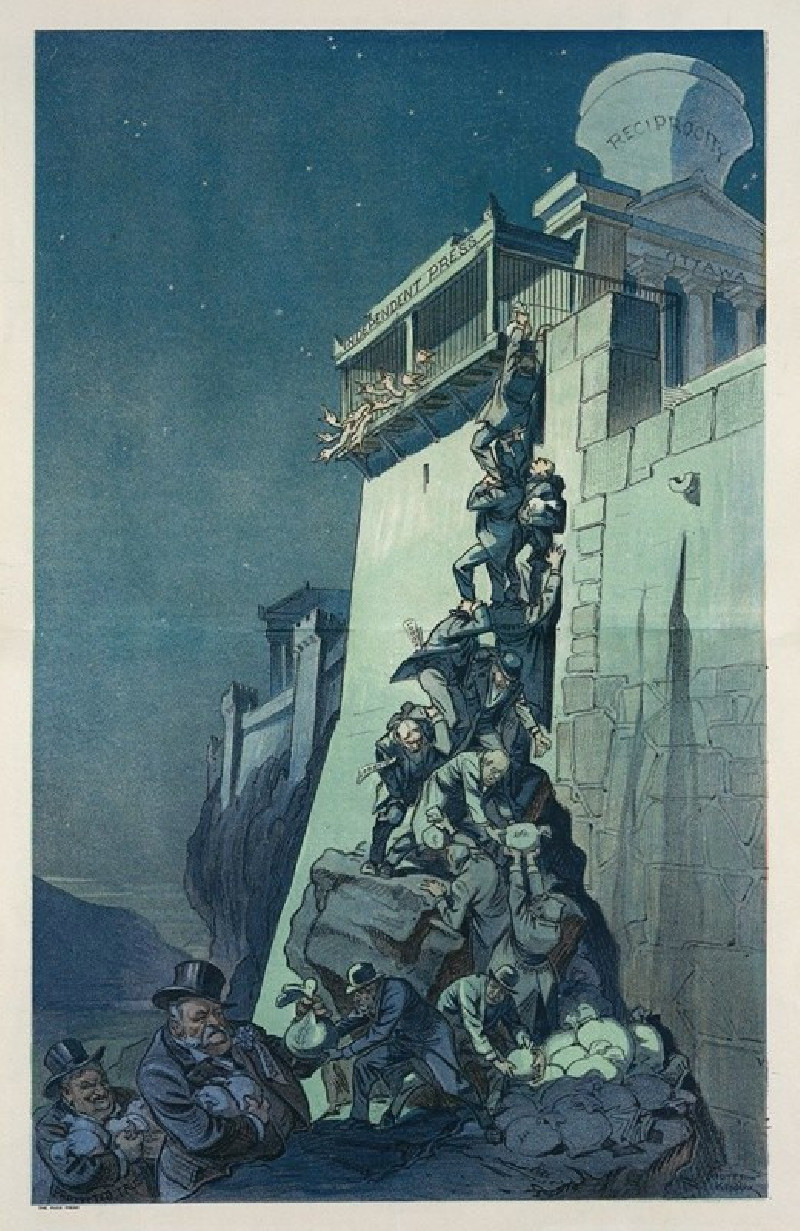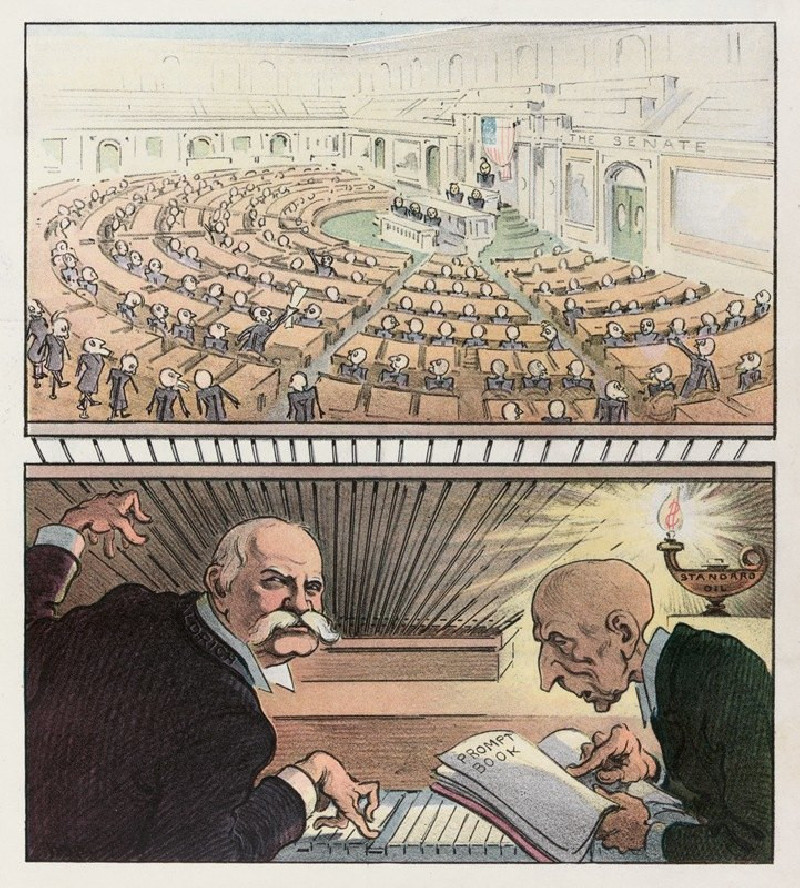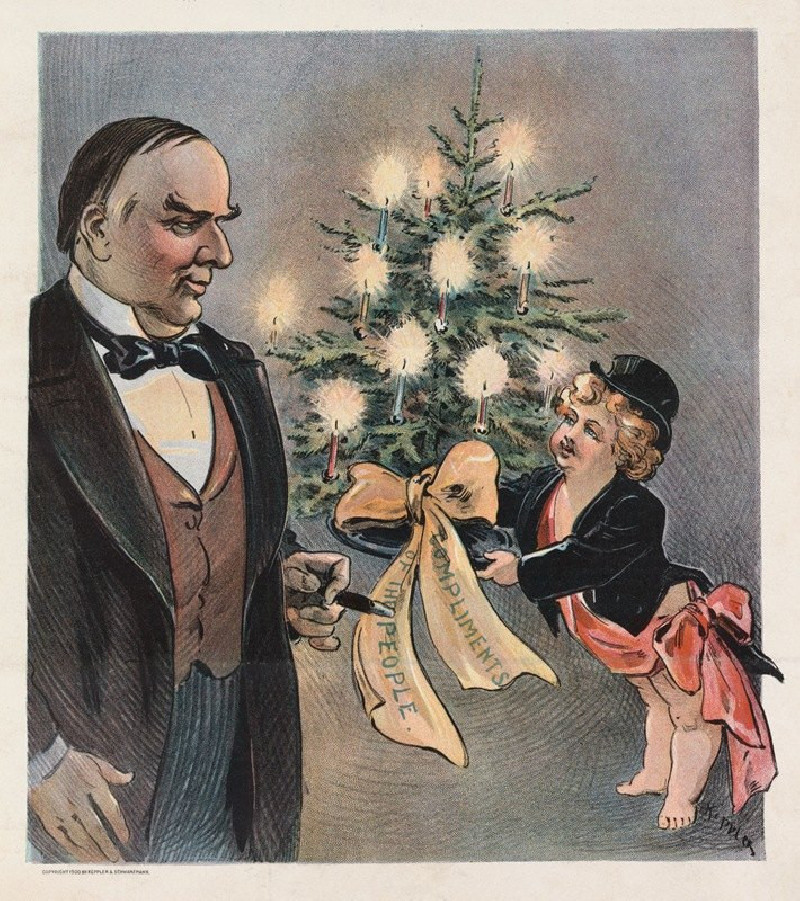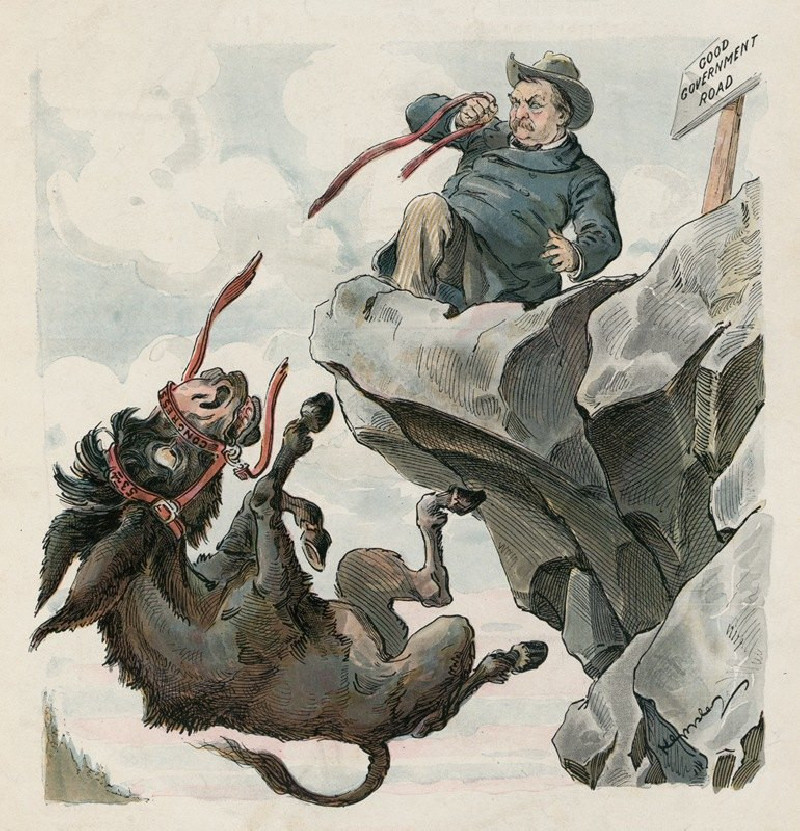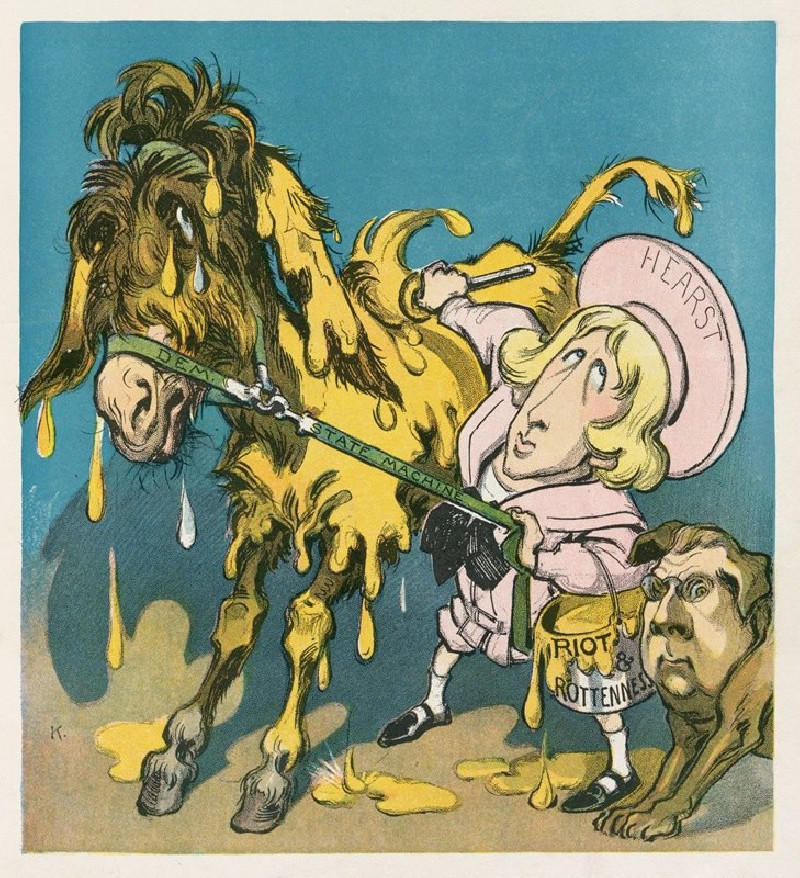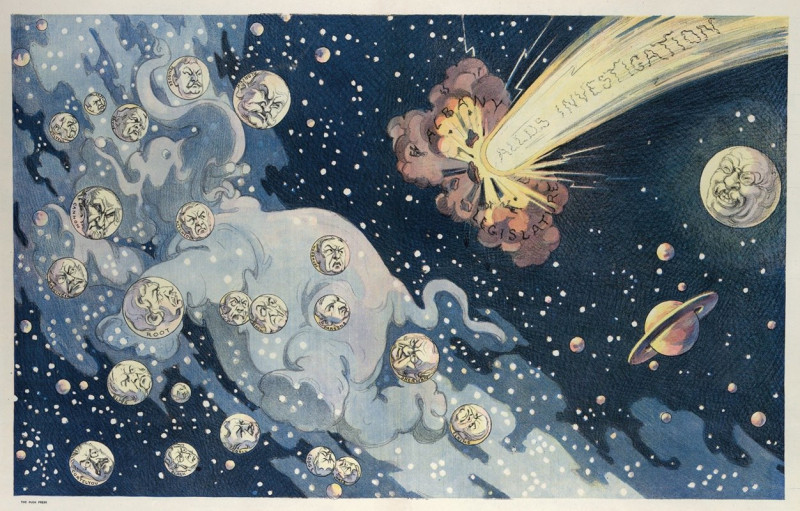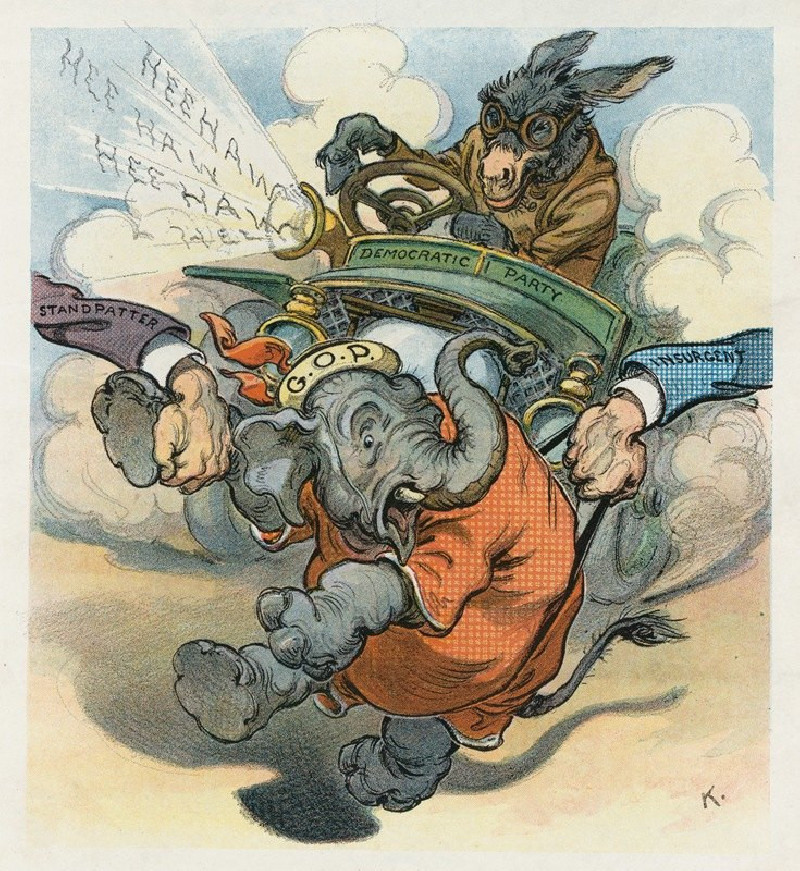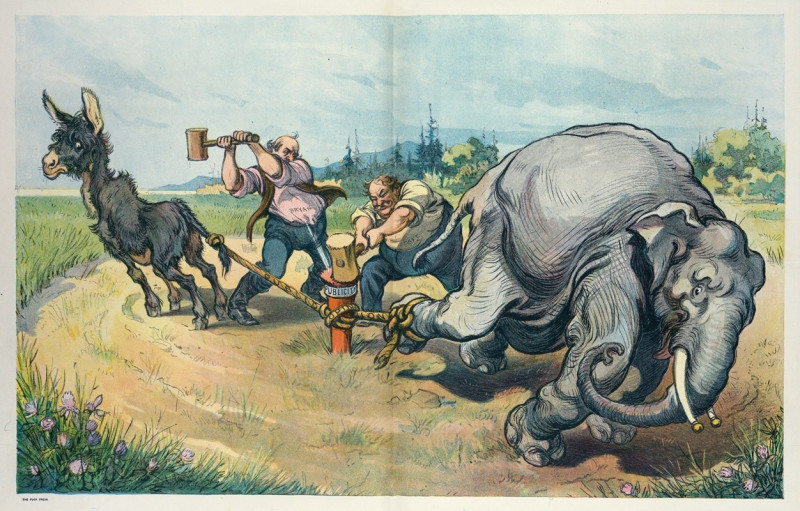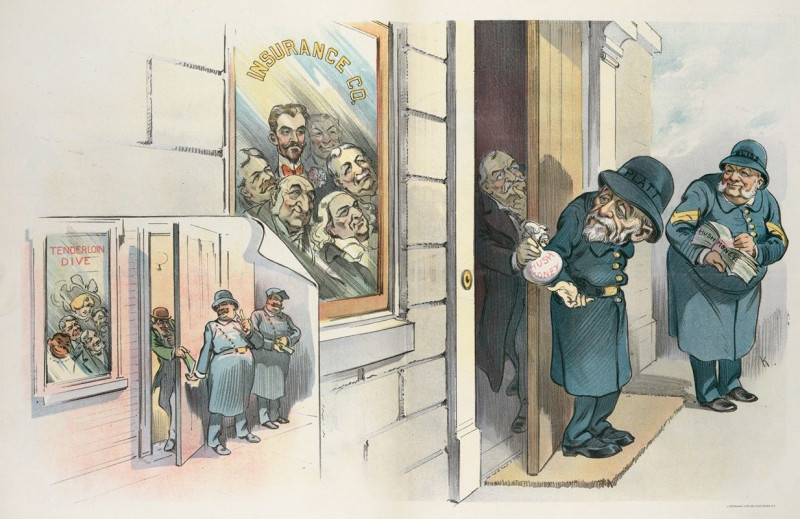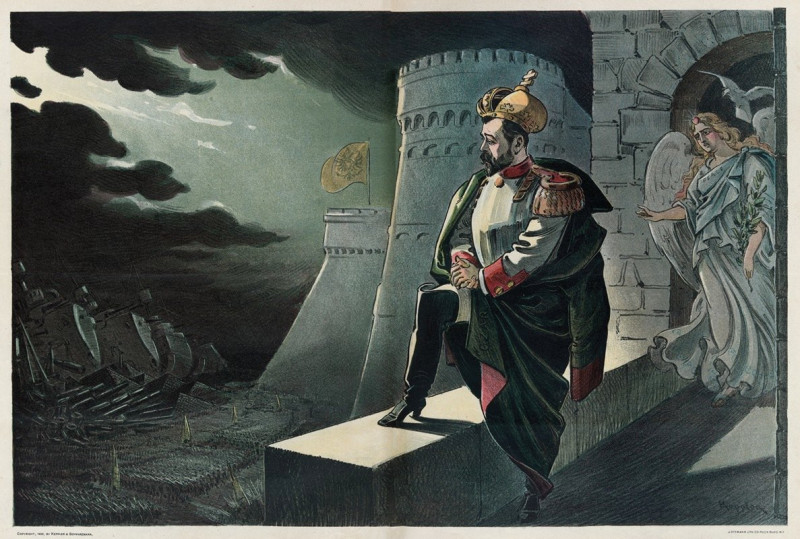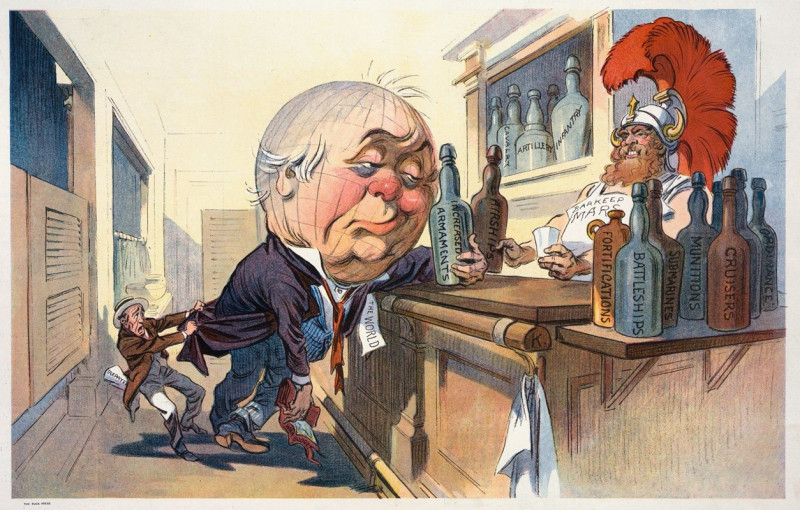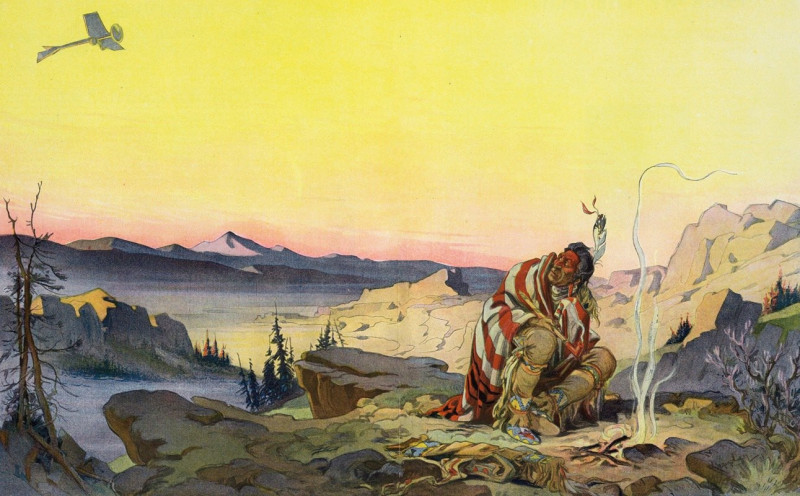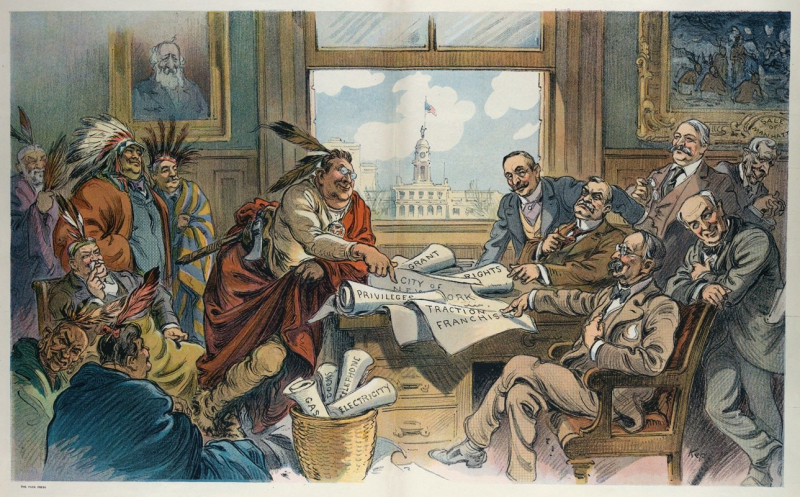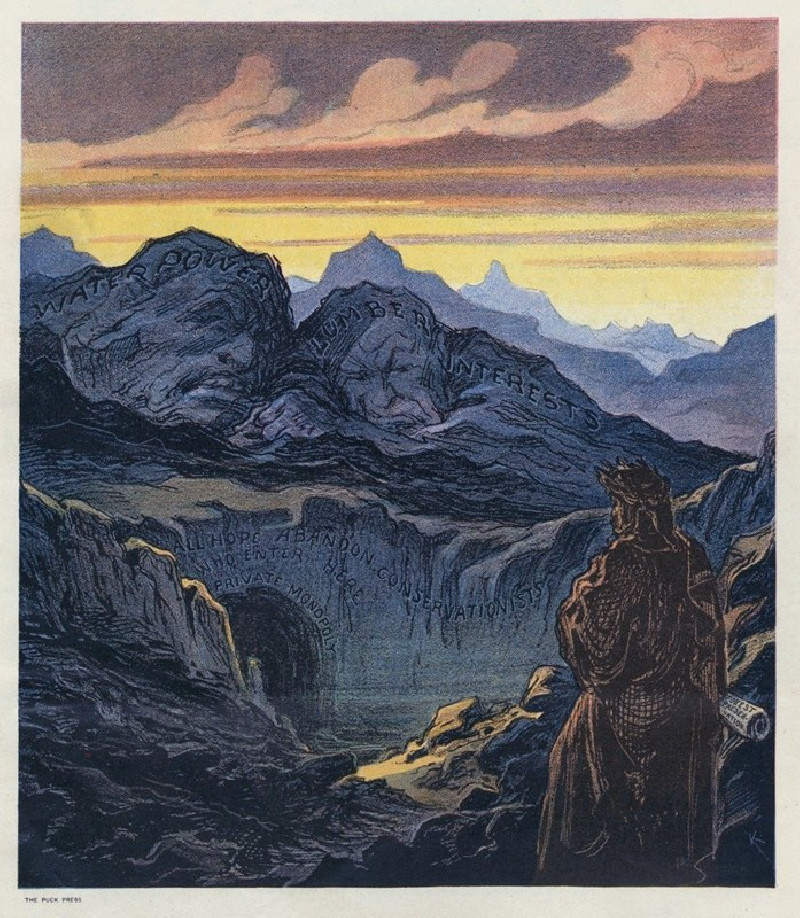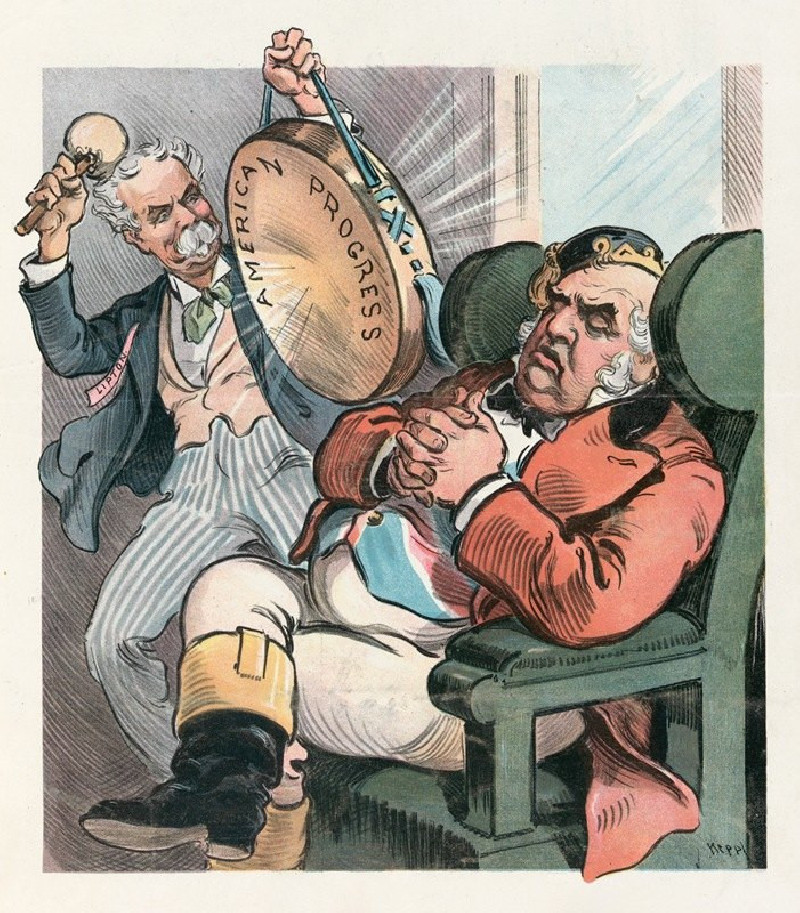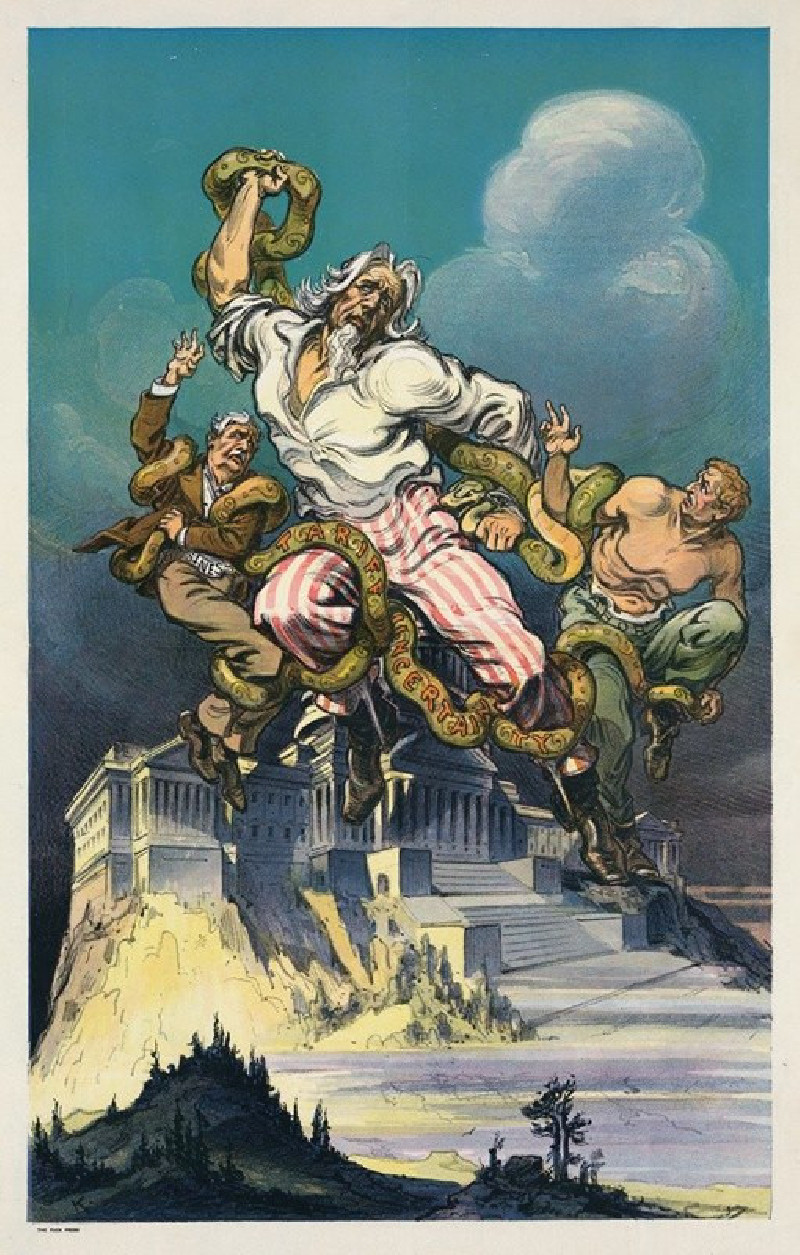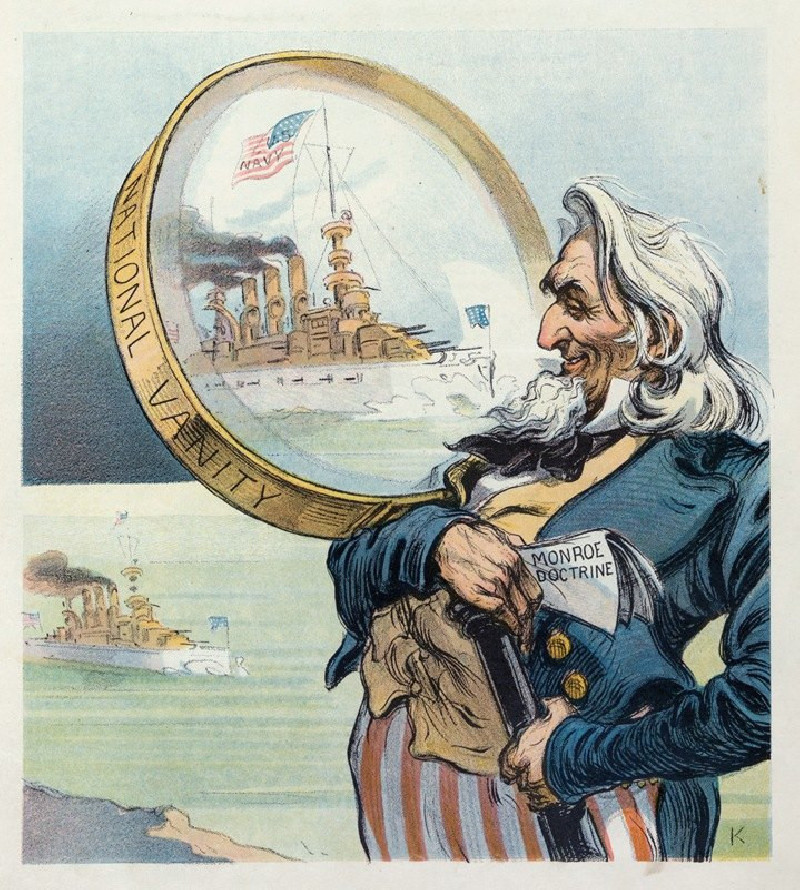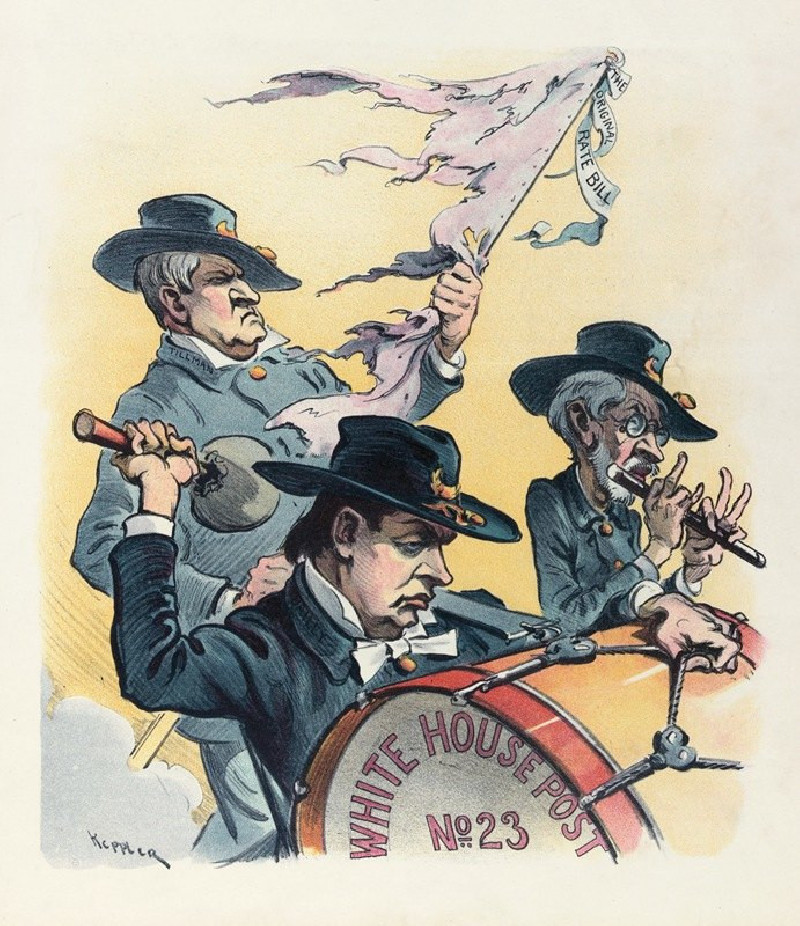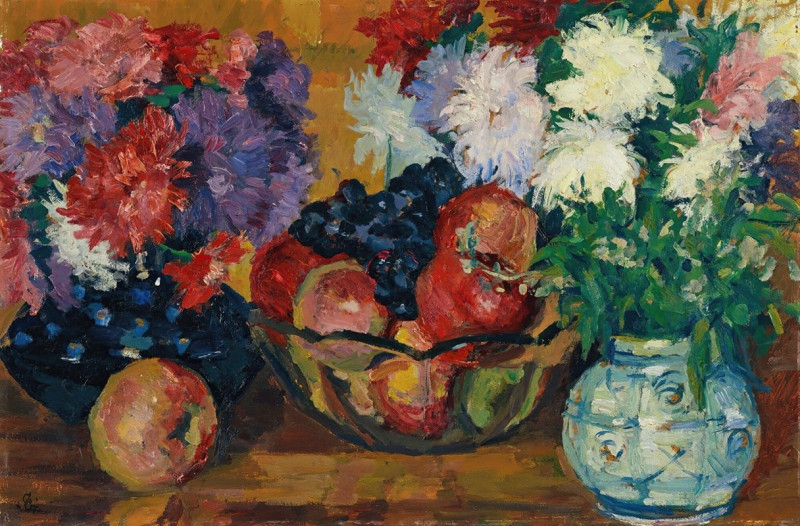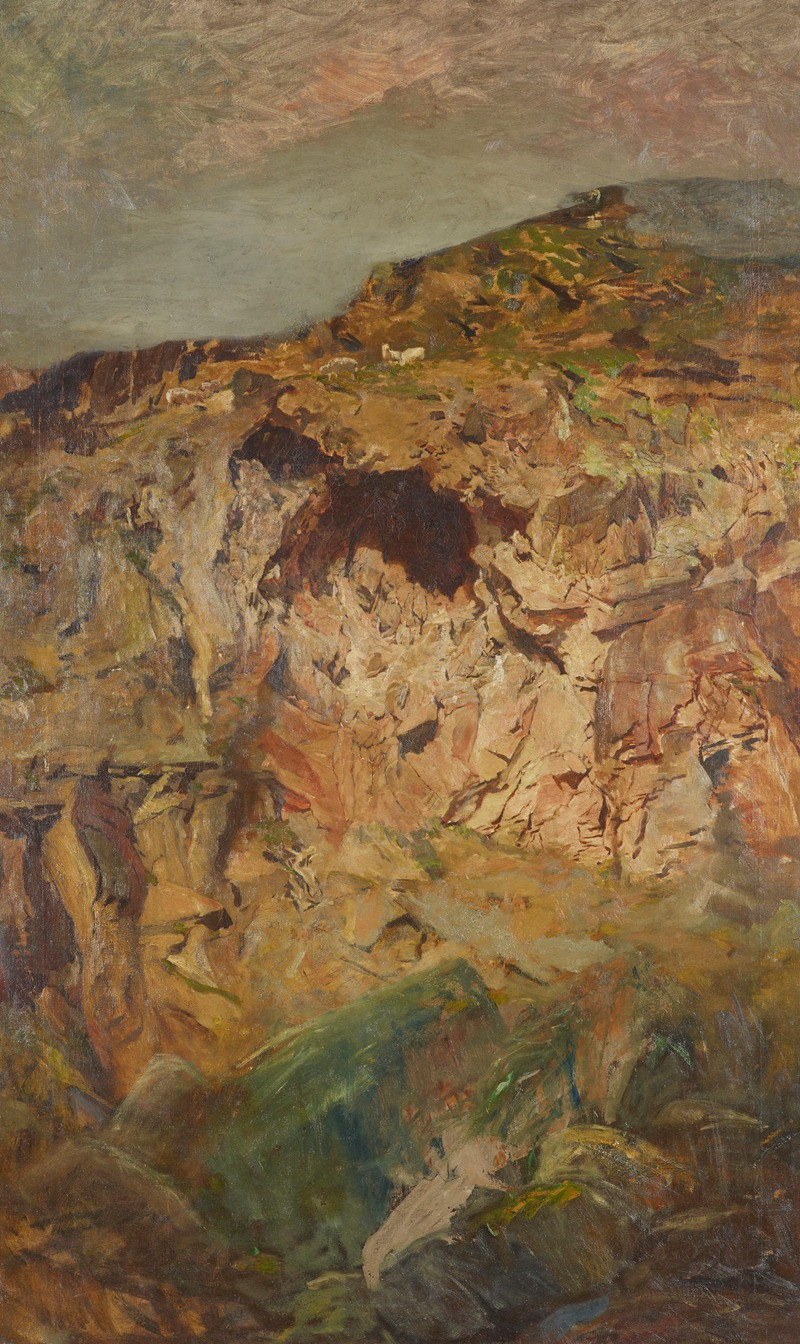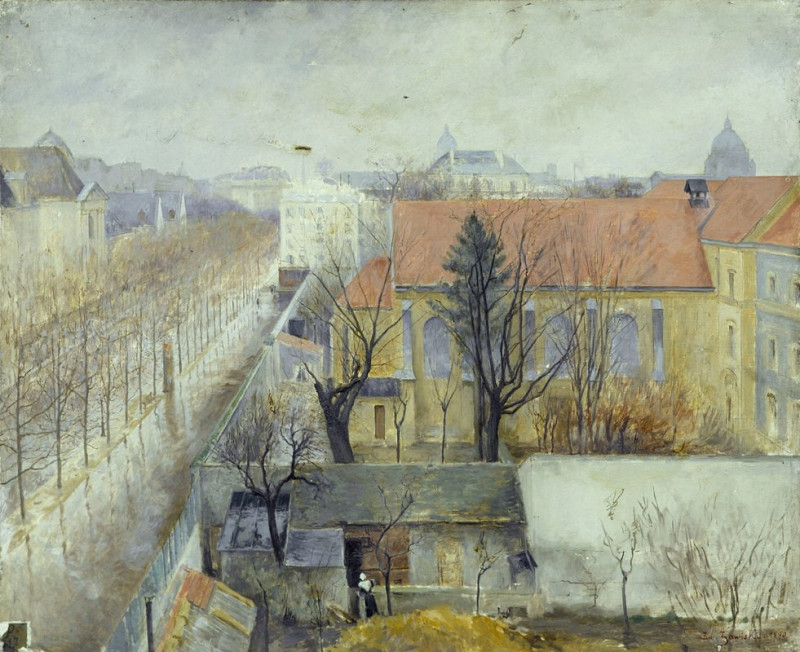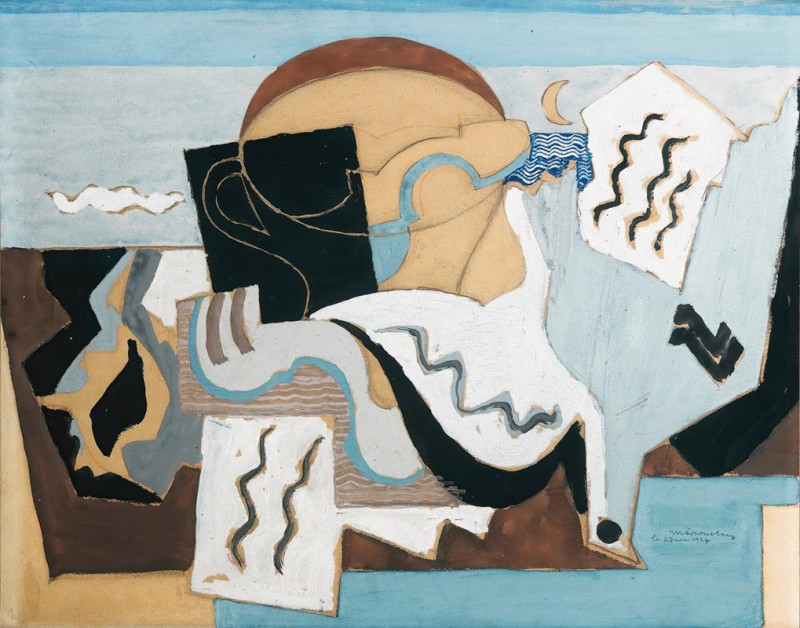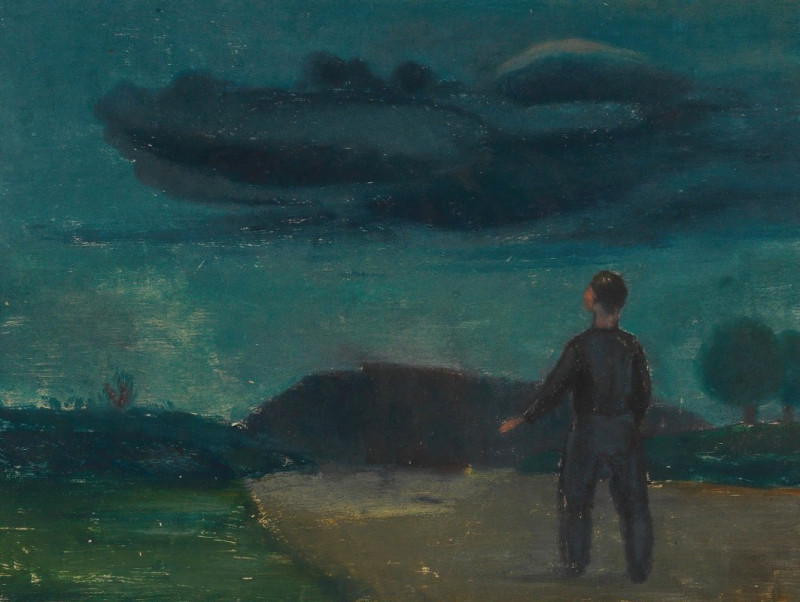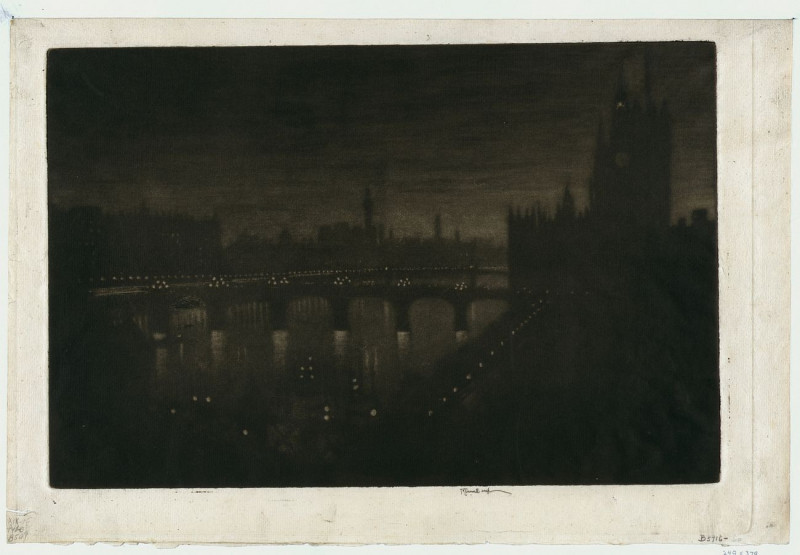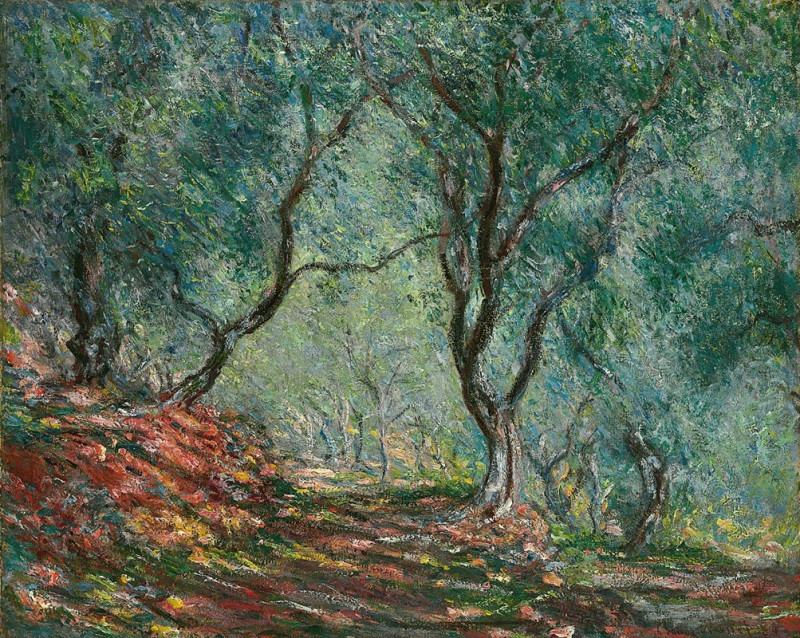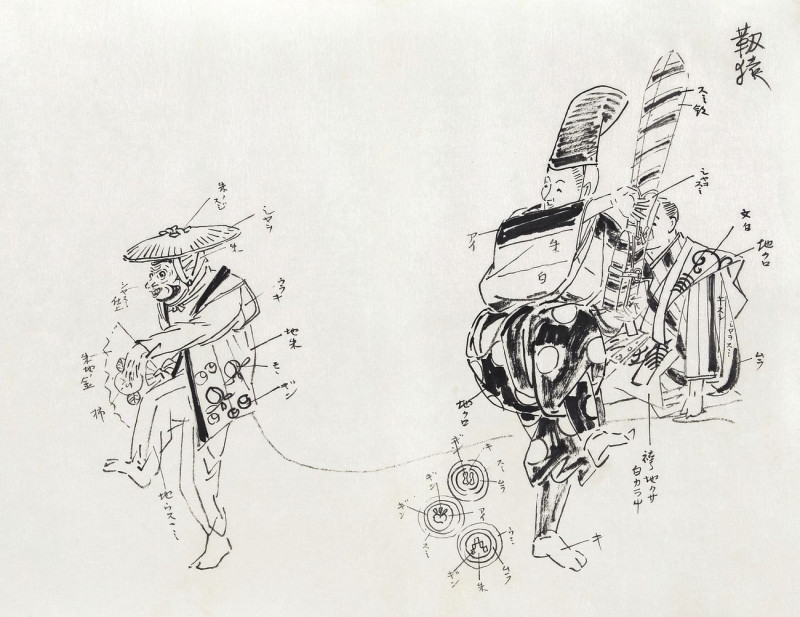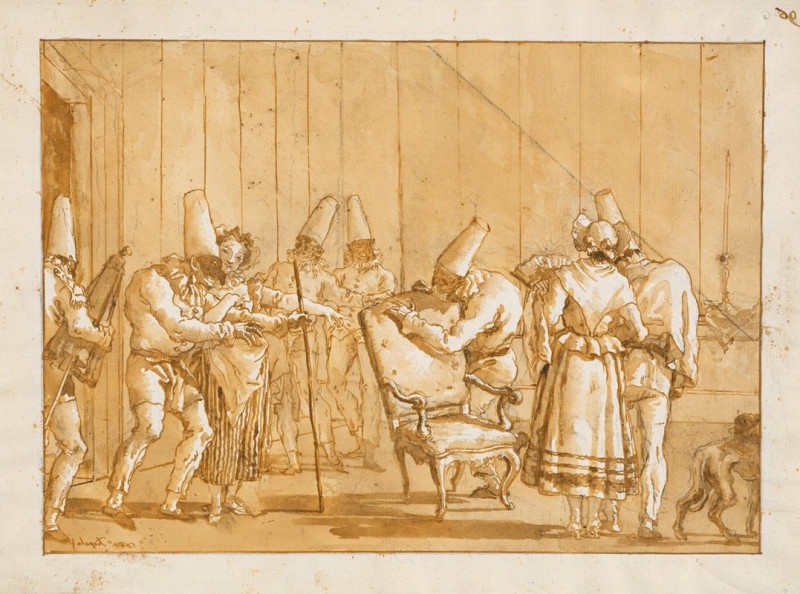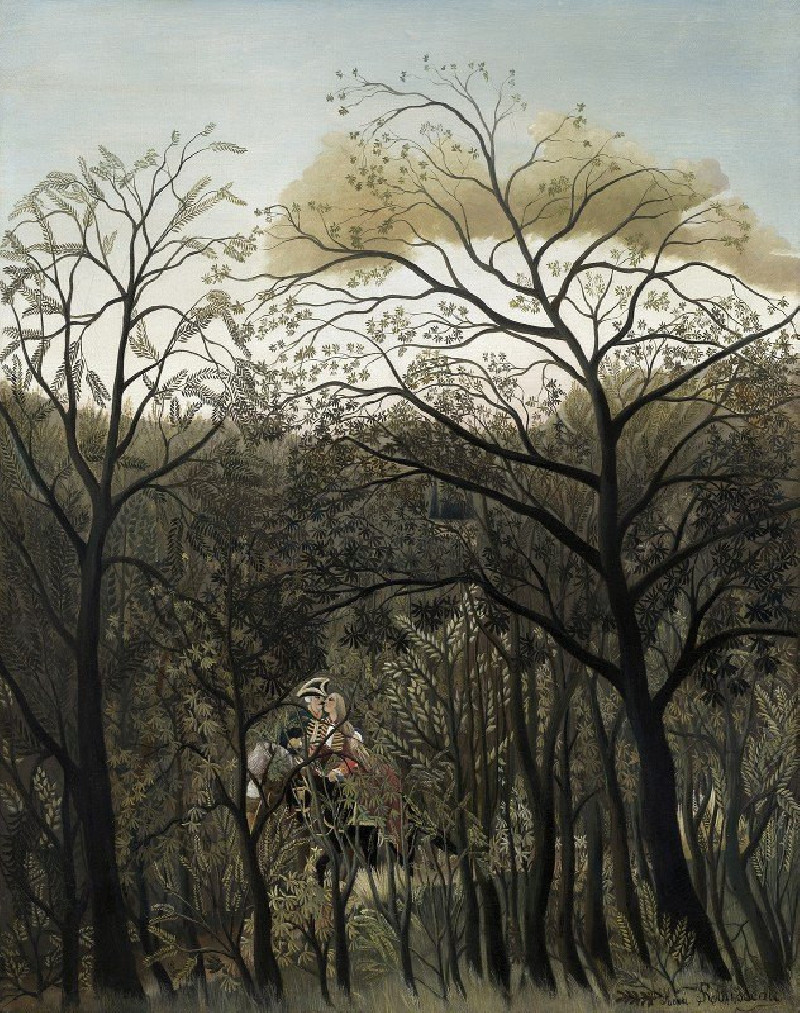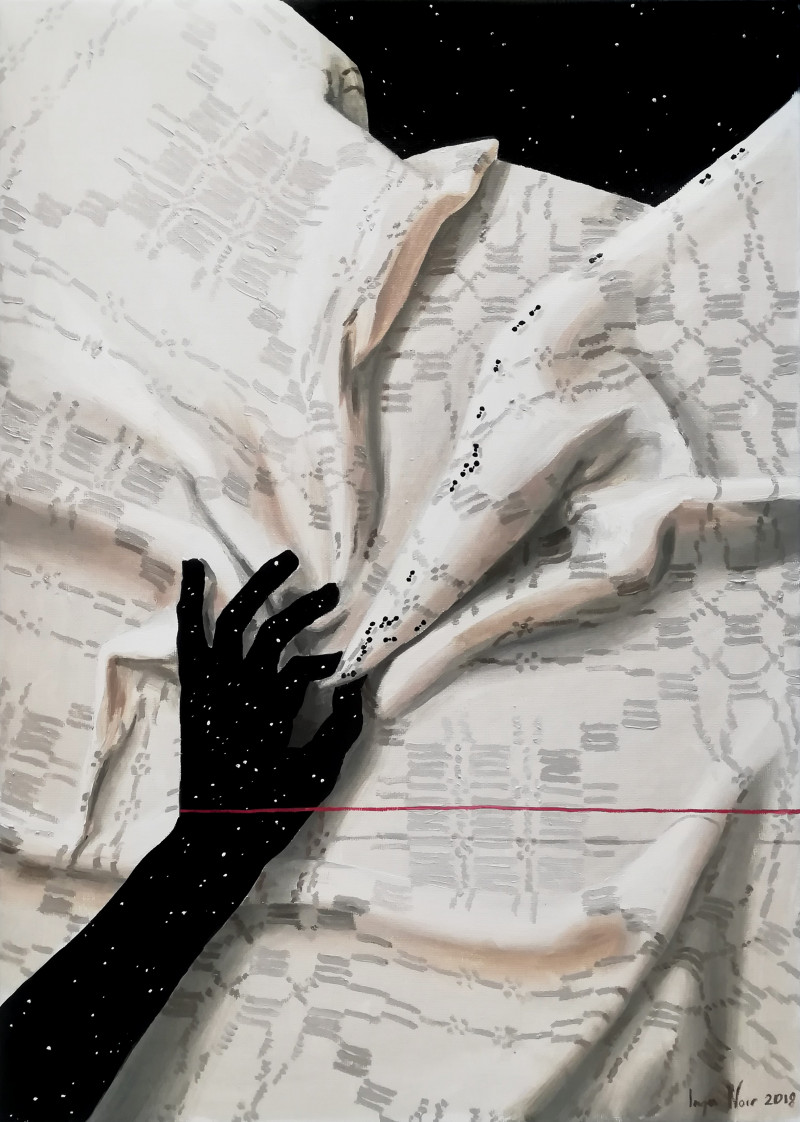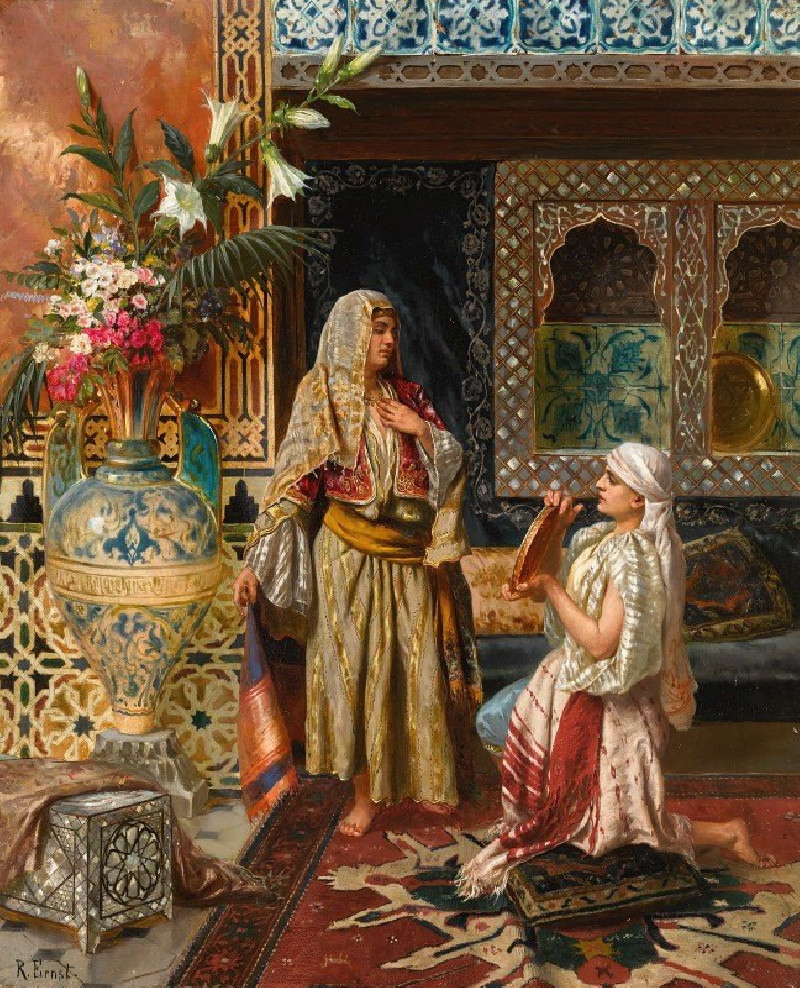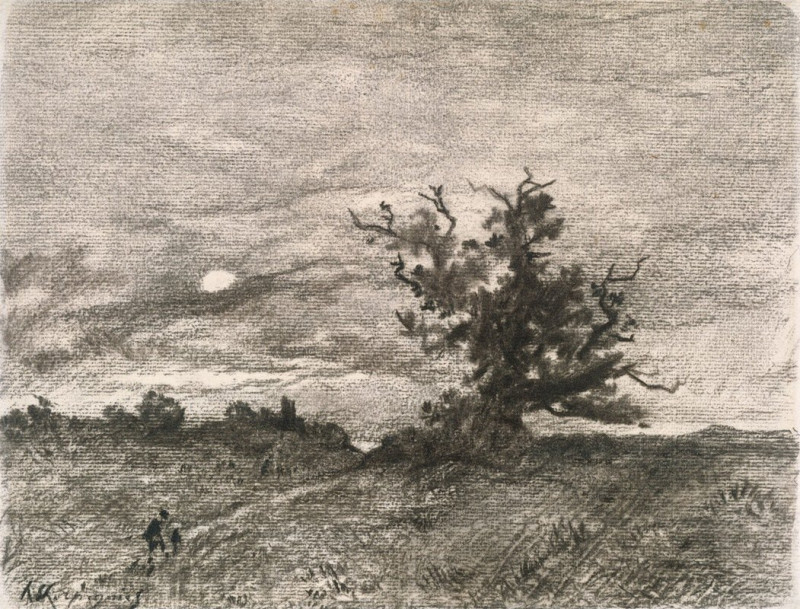Monopoly (1909)
Technique: Giclée quality print
Recommended by our customers
More about this artwork
**Udo Keppler's 1909 painting "Monopoly" serves as a potent satirical commentary, brilliantly capturing the essence of economic and political power dynamics of the time. This piece is split into two distinct panels, each telling a part of the story of corporate greed and its consequences.On the left panel, a rotund, jovial man symbolizes the monopolist. Dressed sharply in a suit and top hat, he smokes a cigar, the smoke forming the word "smoke" as it wafts upwards—perhaps suggesting the smokescreens used by monopolies to obscure their actions. He jovially holds a book labeled "Trusts," indicative of the trusts and monopolies prevalent in the early 20th-century American economy. Beneath his foot, a small man, representing the common man or small business, is trampled—visually emphasizing the disregard larger corporations had for smaller competitors or the general public.The right panel starkly contrasts with its nightmarish vision. A monstrous ape, adorned with human-like features, grips the Capitol dome, suggesting the stranglehold that monopolies held over governmental institutions. The creature's sinister appearance, with a sly grin and unsettling human attributes, conveys the devious and pervasive influence these corporations had on the pillars of democracy.Together, these images merge artistic flair with biting critique, pushing the viewer to consider the impacts of unchecked corporate power.
Delivery
Returns
Udo J. Keppler, since 1894. known as Joseph Keppler, Jr., was an American political cartoonist, publisher, and Native American advocate. The son of cartoonist Joseph Keppler (1838–1894), who founded Puck magazine, the younger Keppler also contributed to cartoons, and after his father's death became co-owner of the magazine under the name Joseph Keppler. He was also a collector of Native American artifacts.


